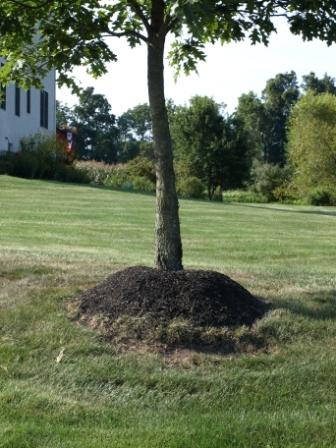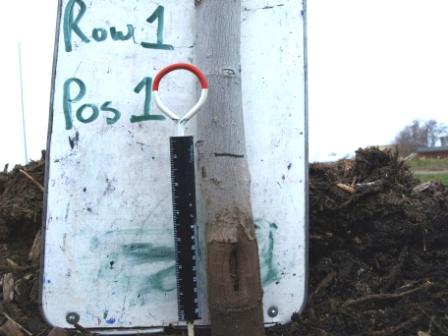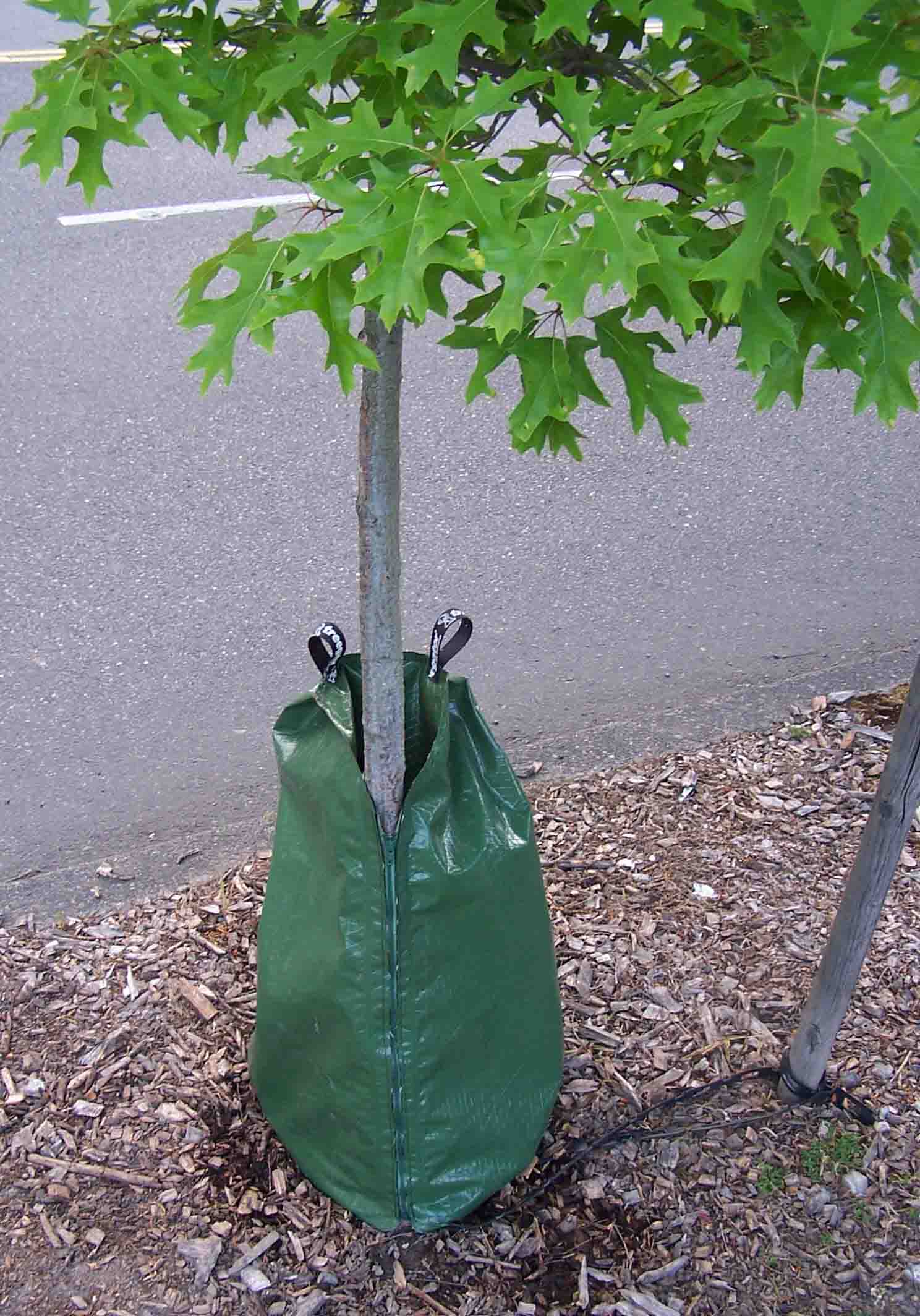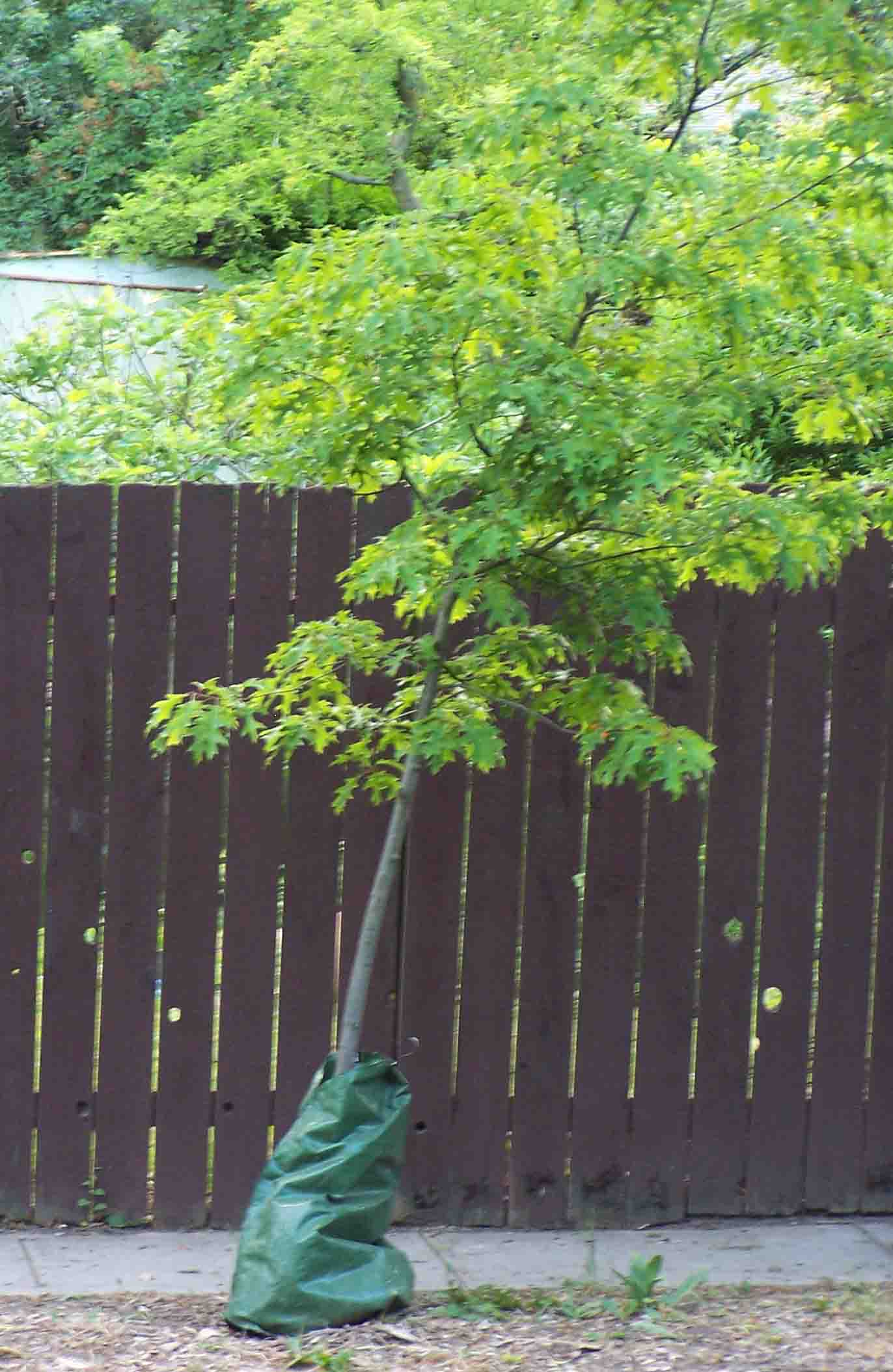Submitted by:
Nicole Ward Gauthier, University of Kentucky Extension Plant Pathologist
PEOPLE: University of Kentucky Department of Plant Pathology Website
Kentucky Diseases of Fruit Crops, Ornamentals, & Forest Trees on Facebook
Amanda Sears, Kentucky Extension Horticulture Agent
Madison County Cooperative Extension Website
Alternatives to Fungicides
When diseases occur in urban landscapes, it is often presumed that fungicides are the most important and effective disease management tools available. However, a good sanitation program can help reduce the need for chemical controls and can improve the effectiveness of other practices for managing disease. This often-overlooked disease management tool reduces pathogen numbers and eliminates infective propagules (inoculum such as fungal spores (figure 1c) , bacterial cells; virus particles; and nematode eggs) that cause disease.


Figure 1b. Pathogen levels can build up on marigold flowers if diseased tissue is left in the landscape

Certain foliar fungal and bacterial leaf spots can become prevalent during rainy or humid growing seasons. When disease management is neglected, pathogen populations build-up and continue to increase as long as there is susceptible plant tissue available for infection and disease development (Figures 1a-c). Infected plant tissue infested soil and pathogen inoculum all serve as sources of pathogens that can later infect healthy plants.

Reduction of pathogens by various sanitation practices can reduce both active and dormant pathogens. While actively growing plants can provide host tissue for pathogen multiplication, dead plant material (foliage, stems, roots) can harbor overwintering propagules for months or years (Figure 2).
These propagules can travel via air/wind currents, stick to shoes or tools, or move with contaminated soil or water droplets. Thus, prevention of spread of pathogens to healthy plants and the elimination of any disease-causing organisms from one season to another are the foundations for a disease management program using sanitation practices.
Sanitation Practices
Elimination and/or reduction of pathogens from the landscape results in fewer pathogen propagules. The following sanitary practices can reduce amounts of infectious pathogens:

- Remove diseased plant tissues from infected plants. Prune branches with cankers (Figure 3a) well below the point of infection (Figure 3b). Cuts should be made at an intersecting branch. Rake and remove fallen buds, flowers, twigs, leaves, and needles.
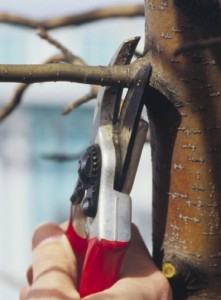
- Disinfest tools used to prune galls and cankers. Cutting blades should be dipped into a commercial sanitizer, 10% Lysol disinfectant, 10% bleach, or rubbing alcohol between each cut.
- If using bleach, rinse and oil tools after completing work, to prevent corrosion.
- Discard perennial and annual plants that are heavily infected and those with untreatable diseases (e.g. root rots, Figure 4; and vascular wilts). Dig up infected plants to include as much of the root system as possible, along with infested soil.
Figure 4. Heavily infected plants or those with untreatable diseases, such as black root rot (images left and right), should be removed from the landscape.
- Trees and shrubs infected with systemic diseases (e.g. Dutch elm disease, Verticillium wilt, bacterial leaf scorch) that show considerable dieback should be cut and the stump removed or destroyed (e.g. by grinding).
- If infected plants are to be treated with fungicides, prune or remove infected tissue (flowers, leaves) and debris to eliminate sources for spore production or propagule multiplication. This should be done before fungicide application. Fungicide effectiveness may be reduced when disease pressure is heavy, which can result when pathogen levels cannot be reduced sufficiently by chemical means (fungicides).
- Discard fallen leaves, needles (Figure 5), prunings, and culled plants. Never leave diseased plant material in the landscape, as pathogens may continue to multiply by producing spores or other propagules. Infected plant material should be buried, burned, or removed with other yard waste.


Figure 5. Black fruiting structures of the pine needlecast pathogen contain spores (images left and right). Removal of infected plant tissue helps reduce amounts of inoculum in the landscape.
- Do not compost diseased plant material or infested soil because incomplete composting (temperatures below 160˚ F) may result in survival of propagules.
- Homeowners should be cautious about storing diseased limbs and trunks as firewood or using the woodchips as mulch. For example, wood from trees infected with Dutch elm disease should be debarked before placing in a firewood pile.
- Remove weeds and volunteer plants to prevent establishment of a “green bridge” between plants. A green bridge allows pathogens to infect alternate hosts until a more suitable one becomes available. Be sure to remove aboveground parts AND roots.
- Soil from container-grown plants should not be reused from one season to the next because pathogens can survive in soil.
Additional Resources:
University of Kentucky Extension Plant Pathology Publications
Photo credits:
R.K. Jones, North Carolina State University (Fig. 1A), courtesy Bugwood.org
M.C. Shurtleff, University of Illinois (Fig. 1B), courtesy Bugwood.org
David Cappaert, Michigan State University (Fig. 1C), courtesy Bugwood.org
Theodor D. Leininger, USDA Forest Service (Fig. 2), courtesy Bugwood.org
Joseph O’Brien, USDA Forest Service (Fig. 3, right), courtesy Bugwood.org
Elizabeth Bush, Virginia Tech (Fig. 4, left), courtesy Bugwood.org
Bruce Watt, University of Maine (Fig. 4, right), courtesy Bugwood.org
Andrej Kunca, National Forest Centre, Slovakia (Fig. 5, left), courtesy Bugwood.org
Robert L. Anderson, USDA Forest Service (Fig. 5, right), courtesy Bugwood.org
John R. Hartman, University of Kentucky (Fig. 3, left)
pdf Managing Diseases Without Fungicides








